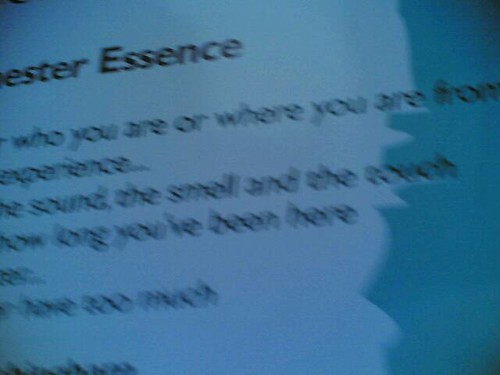
Welcome to the fourth Interfaith Blog Event! In each installment of this series, which we're hoping to do on a monthly basis, we'll explore a single topic across three different religious traditions. I am, obviously, writing from the Mahayana Buddhist tradition. Jon, from
Jesusfollowers Journal, will be writing from a Protestant Christian perspective, and Sojourner from
A Pagan Sojourn, will be writing from a Pagan perspective.
The topic we'll be discussing today is the following:
What role does justice play in the universe?
[Jon's Essay] [Sojourner's Essay]Justice is a flawed concept. Before we can examine why this is the case, we must first understand the depth of this word.
The word "justice" derives from the Latin word
justus which, in turn, is based on the word
jus, meaning "law, right." (New Oxford American Dictionary). From this etymology, the concept of
jus and, therefore, justice, clearly has two underlying premises: (1) A law exists; and (2) Actions can be right (further implying that they can be wrong). For our purposes, "laws" include both societal laws (e.g. Speed limits) and moral laws (e.g. "Do not murder" and "Do not gossip"). Justice, then, is really the administration of the law.
More importantly, however, how do we intuitively view justice? To gain some insight into this question, let's step away from our wordplay for a moment. The Qabalah, more explicitly the Tree of Life, gives us a wonderful tool for this analysis. The Tree of Life is a pictorial representation of the universe that consists of three pillars, the middle of which is a melding of the two extremes of the outer pillars. These outer two pillars are named Severity and Mercy. In other words, according to this model, a continuum exists that spans the entire range between the two poles of Severity and Mercy, perfectly balanced in the Middle Pillar, the Pillar of Mildness. It seems to me that the manner in which we intuitively view and apply justice lies on this Severity/Mercy continuum. When a law is broken (or we are wronged), we view this offense with a backdrop of Severity and Mercy. Maybe we want to effect justice, which connotes punishment; or maybe we forgive the offender, showing him/her mercy. Most often, our response lies somewhere in the middle, in a merging of these two poles such that we punish the offender, but reduce our planned sentence due to some special (merciful) consideration of his circumstance.
Note that we equally apply this approach to justice in our everyday lives as well as in our social justice system. If somebody says something that offends you, what is your most probable response? Generally speaking, people respond initially with anger or defiance, and then either punish the offender in some manner ("How dare you say that to me, you *$%@!"), or forgive him, or some combination of both. Sometimes our applied punishment is even more insidious, like the dreaded silent treatment. Regardless, the common element is the backdrop of Severity/Mercy -- how severely should we punish somebody who has broken "a law," and how merciful should we be?
The debate over capital punishment is a great example of this dualistic approach. Proponents of capital punishment argue that a person who so hideously harms another as to deserve this punishment has given up his right to life. They deem that the punishment be Severe to the utmost degree. However, note that Mercy has begun to show its face in recent history, as we try to make the death as painless as possible. On the contrary, opponents of capital punishment say that we do not have the right to take life in this manner. However, most of these people still view the situation in terms of "sentencing" the criminal with the punishment he deserves. Herein lies the problem with justice.
In our dualistic manner, we see how one person harms another and therefore think he "deserves" some kind of punishment. This is a clear example of wrong view, with ego as its fundamental cause. Any time we think along the lines of "deserving," it is our ego speaking. "I deserve to be treated better" is your ego exerting its self-importance. "He deserves to sit in prison for 10 years" is solely an ego-trip--how do you know exactly what he deserves? "He murdered his neighbor, therefore he deserves to spend his life in prison" is still an ego judgment on another being. Extending this to the sphere of moral law, any God who administers justice or mercifully forgives is acting out of his/her own ego. Of course, such personification of God is inherently limited. But I feel the truth behind the wisdom still holds--applying justice and, therefore, allowing for forgiveness, is wrong view.
Right view, in contrast, consists of compassionate action and directly observable truth. In right view, we recognize that when one man has murdered another, he must be secluded from society for the safety of all. We attempt to rehabilitate the offender because all beings have the right to such fair treatment. Perhaps it will be unsuccessful, in which case that man never gets to leave prison. Perhaps it will be successful, in which case that man is released to rejoin society. In right view, we see that causes conditioned the murderer's actions and, while his actions are not condoned, there is zero judgmentalism. The murderer does not "deserve" to be punished any more than we deserve to die at the end of our lives or to be born at the beginning.
As another example, instead of applying the silent treatment when a loved one does something to us that we interpret as hurtful, right view is recognizing that the other person's actions are based on a complex of causes, which can only warrant a compassionate response. Even if they did the hurtful action "on purpose," causes and conditions in their past are still the only true offender.
Notice the difference in underlying attitude between right view and wrong view. In right view, all response is based in compassion, recognizing the true causes of all behavior. In wrong view, the dualities of Severity and Mercy, or similarly, Justice and Forgiveness, are employed by the ego in judging another's behavior. Therefore, justice is a flawed concept that only perpetuates wrong views of self, wrong views of other, and wrong views of the world in which we live. It seems logical to our minds, and does get criminals off the street, but it's really like a band-aid applied to a deep puncture wound--while the wound may seem to have been treated from the outside, deep within infection festers.
Compassionate action and right view, however, are the medicines for this wound. They treat directly the source of the problem. Instead of succumbing to ego, we ask, "What can I do to help others?" Then we go out of our way to do it. And we do it without thought of ourselves, but only of others. In the case of a dangerous criminal, we seclude them in prison for the sake of protecting others, which seems very similar to the Justice approach. But there truly is a major difference in the underlying attitude behind the same physical act of imprisoning a criminal. And this is where the strength of right view lies: in fertilizing the seeds of compassion and love in the mind, engendering true wisdom and unfettered love of others. Right View is admittedly difficult to develop, especially in our culture, but the results are worth the effort and are necessary to live a life of wisdom.










